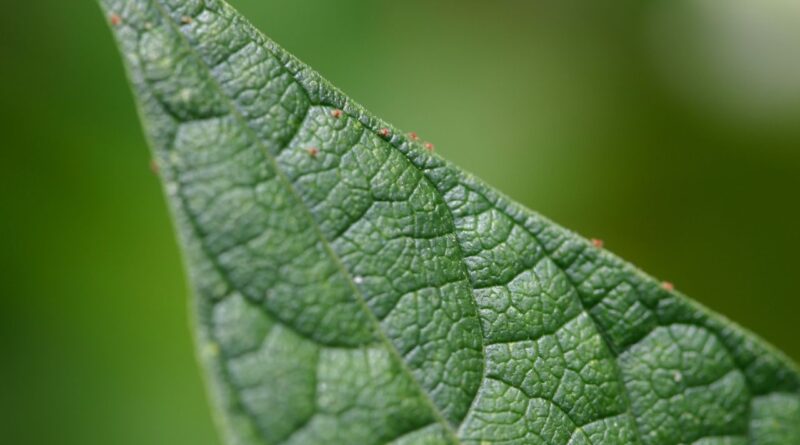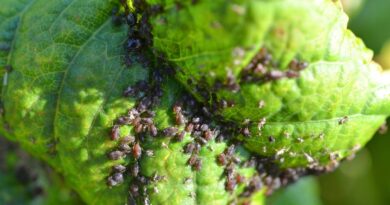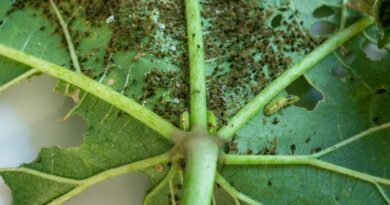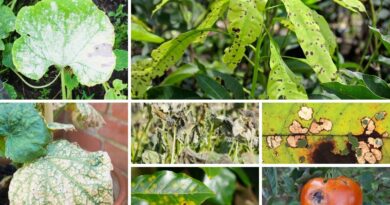A Basic Guide To Spidermites
What are Spidermites?
Spidermites are tiny sucking pests which are related to spiders and ticks. They can attack both indoor and outdoor plants and they are especially destructive in greenhouses. They can attack a wide range of plants including roses, tomatoes, potatoes, beans, cucurbits, strawberries, citrus and cotton. Spidermites are prevalent in hot and dry conditions as well as dusty environments. In environments where a lot of chemical pesticides are used, spidermite infestations can be severe because of the destruction of their natural enemies by the chemicals. They can multiply very fast and destroy plants within a short time. Infestation tends to be lesser after rains. Spidermites are mainly spread via the wind or movement of infected plant material but they can also be spread through our clothes, shoes or pets. There are hundreds of spidermite species but the most common one is the two-spotted spidermite which are found widely in fields, orchards, gardens, greenhouses and indoors. Spidermites are variable in colour depending on the species. many of the species, however, are bright red in colour hence the reason they are sometimes called red spidermites. Other species are yellow, green, pink, orange or reddish in colour. The two-spotted spider mite has a large dark blotch on each side of the body and their colour ranges from pale yellow to green, brown and red hues. Younger spidermites resemble the adults only that they are much smaller. In Africa, there are six major species of spidermites. They include:
- Two-spotted spidermite
- Tobacco red spidermite
- Carmine red spidermite
- Cassava green mite
- Coffee red mite
- Cotton red mite
The lifecycle of spidermites
The lifecycle of spidermites may take 10 to 30 days depending on the temperature. During hot and dry weather, they can develop from egg to adult in as little as 5 days. Spidermites go through five different stages of life; egg, larva, protonymph, deutonymph and adult. After mating, female spidermites produce as many as 300 eggs over a couple of weeks. They lay their eggs on the underside of leaves. Fertilized eggs become female while unfertilized eggs become male. When the eggs hatch, six- legged colourless larvae emerge and immediately begin to feed. Once a larvae has consumed enough food they become temporarily inactive and develop into an eight-legged protonymph. The protonymph continues feeding then it undergoes a moulting process and becomes a deutonymph. The deutonymph goes through the feeding and resting cycle again before moulting again to become an eight-legged adult. The adult spidermite is ready to lay eggs and restart the cycle. Adult spidermites can reproduce both sexually and asexually.
How to identify spider mite damage
Spider mites are mostly found on the underside of leaves living in colonies. Since they are very tiny, their population can build up unnoticed before plants begin to show damage. Spidermites damage plants by sucking the contents of individual plant cells. They pierce the cell wall of the back of leaves and suck the sap out of the leaf, causing it to spot giving the leaves a ‘dusty’ appearance. Over time, this goes from tiny yellow spots through complete yellowing of the leaf. In some plants, attacked leaves can turn bronze, rusty, purple or yellow brown colour. The leaves may curl and fall off. Large infestations are often accompanied by fine webbing. The mites can be seen moving on the web. They produce this web to protect themselves and their eggs. A large population can lead to plant death.
How to control spidermites
- Regular scouting is very important because spidermite populations can build up very rapidly. Once their population becomes established it can be very difficult to control the pest, therefore control must start early.
- Affected plants should be isolated from healthy plants as soon as the pests are spotted. Infested parts should be pruned and discarded if only a small part of the plant is affected. Severely affected plants should be uprooted and burned or discarded in the trash (not in compost).
- Practicing good field sanitation such as sanitizing tools and keeping the garden weed free minimizes the spreading of spidermites.
- Overhead irrigation or hosing with a strong jet of water knocks off mites and destroys their webs. Be sure to spray the underneath of the leaves. However, this should be done early in the day to allow the foliage to dry. Wetness of the foliage for a prolonged period encourages development of fungal diseases. For outdoor gardens, water pathways and other dusty areas regularly.
- Water stress makes plants more susceptible to spidermite infestations. Make sure your plants are properly watered and healthy. Healthy plants can fight off infestations better.
5 Natural enemies of spidermites control infestations. Spidermites have a number of natural enemies including lacewings, ladybirds, hoverflies, mirid bugs, predatory beetles, predatory thrips and predatory mites. Companion planting especially with flowering plants helps to attract these beneficial insects. Using broad spectrum chemical pesticides should be avoided to protect these good bugs. Some of these natural enemies occur naturally while others are sold commercially for example predatory mites. If infestation is high, organic sprays or hosing with a jet of water can be used first to reduce the population before releasing commercially bought predators.
6 Natural commercial pyrethrum extracts can be used to control spidermites when applied on very early outbreaks.
7 Insecticidal soap can be used for spot spraying to control spidermites. Apply on the infested plant thoroughly. Repeat spraying every 6-7 days so as to eradicate all generations of the spidermites and prevent further infestation.
8 Neem oil can be used as a contact or systemic pesticide against spidermites. Neem oil should be used appropriately to avoid harming the beneficial insects.
When using soap solution, pyrethrum extracts and neem oil, good timing is important to avoid harming beneficial insects. Spraying should be done early morning or late evening when the beneficials are less active. Neem oil and soap sprays should not be sprayed when the sun is hot, it may cause leaf scorching. Make sure your plants are well-watered before spraying, do not spray wilted plants to avoid damaging them. Avoid spraying flowers directly with neem oil.




